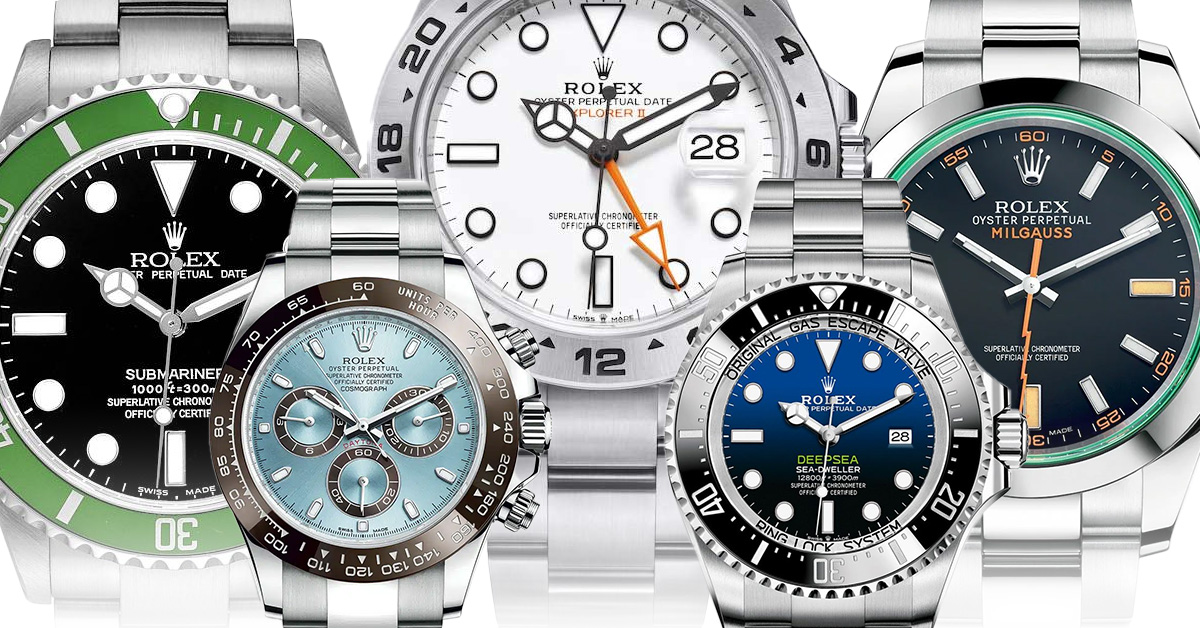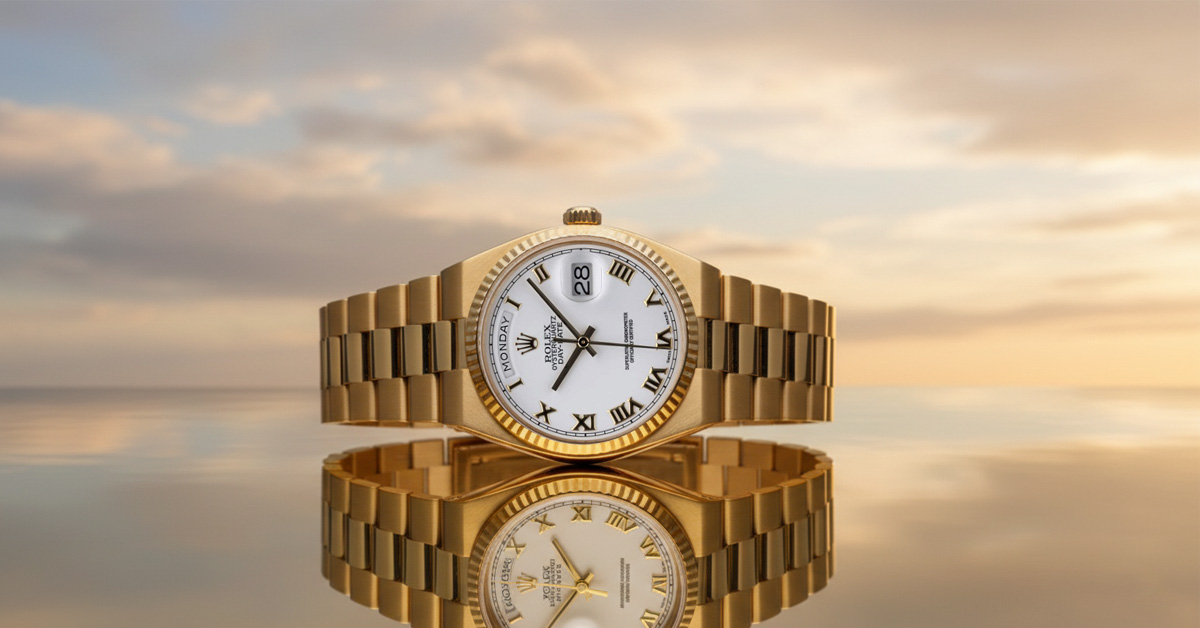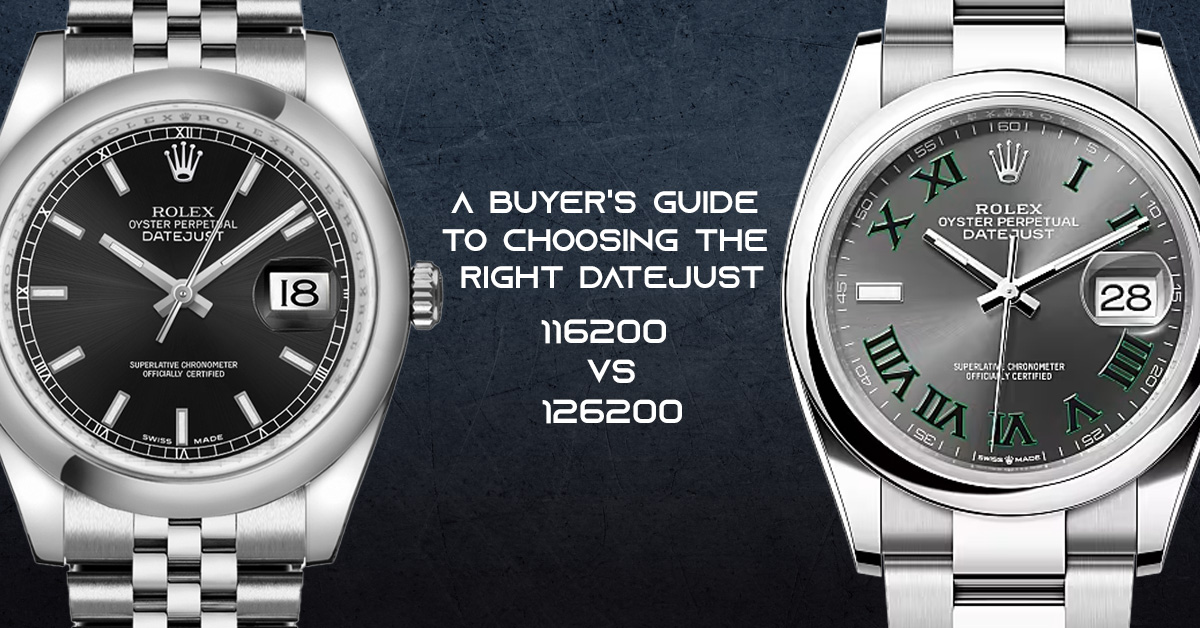
Rolex Anniversary Watches: The Full Collection Review
These special Rolex anniversary watches mark pivotal moments in horological history. The Submariner’s 50th celebration in 2003 showcased a striking green bezel, while the GMT-Master
The Rolex Oysterquartz Day Date stands as one of the most captivating chapters in watchmaking history. Only 25,000 units that ever spread across its 26-year production run from 1977 to 2003. This timepiece showcases Rolex’s bold response to the quartz revolution.
A closer look at the Oysterquartz Rolex reveals it’s nowhere near just another quartz watch. The watch’s oscillator ran four times faster than its competing models. The Rolex Oysterquartz Day Date’s value has climbed steadily, and exceptional pieces now command prices up to $166,500 at auction. The Rolex oysterquartz day date gold versions showcase some of the brand’s most distinctive designs.
The sort of thing i love about this watch goes beyond its rarity or historical significance – it’s the hidden technical achievements collectors often overlook. This remarkable timepiece achieves impressive accuracy within 50 seconds annually and has reached Mount Everest’s summit. These secrets separate casual admirers from true connoisseurs of the Rolex day date oysterquartz.
The watchmaking scene went through a massive change in the late 1960s and early 1970s that changed horological history forever. This period became known as the “Quartz Crisis” – a crucial moment that made Swiss watchmakers think over their future.
Mechanical watches ruled the global market before quartz technology arrived. Everything changed in 1969 when Seiko launched the Astron, the world’s first commercial quartz wristwatch. Traditional Swiss watchmaking faced an existential threat from this breakthrough.
Quartz movements proved better than mechanical ones in many ways. These movements were more accurate, needed less upkeep, and cost much less to make. Japanese and American companies quickly adopted this technology, which created tough competition for traditional watch manufacturers.
Swiss watch companies felt the full effect of this change between 1970 and 1983. Switzerland’s watchmaking workforce dropped from 90,000 to just 28,000, and many old brands vanished. The country’s share in the global market fell from 50% to less than 15% during these years.
Swiss manufacturers joined forces to create the Center Electronique Horloger (CEH) – a research group focused on Swiss quartz technology. Rolex worked with this group among other luxury brands like Patek Philippe and Omega.
The CEH created the Beta 21 movement, which powered early Swiss quartz watches including the Rolex Reference 5100. Rolex soon became unhappy with this setup. The brand had built its name on making parts in-house, and using a shared Beta 21 didn’t fit this approach.
Rolex showed its independent spirit by leaving the CEH in the early 1970s. The company chose to create its own quartz movement that would meet Rolex’s high standards instead of working with others.
Rolex showed its answer to the quartz revolution in 1977 after five years of research. The brand created something new with the Rolex oyster quartz day date instead of just copying existing technology.
The rolex day date oysterquartz stayed true to the brand’s values of precision and craft, unlike most quartz watches that focused on cheap mass production. Each movement had 60 hand-assembled jewels – way more than regular quartz movements back then.
The rolex oysterquartz day date gold and steel versions came with a unique angular case design that looked different from Rolex’s usual style. This bold design extended to the bracelet, which created a unified look that set these models apart from mechanical watches.
The oysterquartz rolex didn’t sell in huge numbers, but these watches meant more than just keeping up with technology. They showed Rolex’s steadfast dedication to excellence during industry-wide changes. The various rolex oysterquartz day date models proved that Rolex knew how to create while staying true to its core values – something few watchmakers managed during these challenging times.
Unlike other luxury manufacturers that just added quartz technology to their watches, Rolex created something extraordinary with its Caliber 5055. The powerhouse movement inside the rolex oysterquartz day date showed a complete rethinking of what a quartz watch could be. It wasn’t just an electronic timekeeping device, but a precision instrument worthy of the crown logo.
Standard quartz movements have always struggled with temperature fluctuations. The frequency of quartz crystal oscillations changes as ambient conditions shift, which leads to timing variations. Rolex’s engineers solved this problem by adding sophisticated thermo-compensation circuitry to the Caliber 5055.
The system uses a thermistor to monitor temperature changes constantly. The circuit adjusts the voltage to the quartz crystal automatically when it detects changes. This keeps oscillation consistent whatever the environmental conditions. The rolex day date oysterquartz achieves amazing accuracy within 50 seconds per year—about five times more precise than standard quartz movements back then.
The oysterquartz rolex stands out because it stays true to traditional watchmaking principles. The movement has 11 jewels—unusually high for a quartz caliber. These jewels help reduce friction where mechanical parts meet, which makes components last longer and perform better. The movement’s 32,768 Hz oscillator works with unique Rolex parts to manage power and improve gear train efficiency.
Rolex wanted more than just a quartz movement—they wanted one that could meet strict Swiss chronometer certification standards. Every rolex oysterquartz day date went through COSC testing, the same independent verification process used for their mechanical watches.
COSC certification requires quartz movements to be accurate within ±0.2 seconds daily—the Caliber 5055 easily beats this standard. The certification tests performance at five different temperatures and six positions to ensure reliable timekeeping in real-life conditions.
Most quartz watches back then focused only on accuracy. The rolex oysterquartz day date gold and steel models delivered much more:
The Caliber 5055’s most impressive feature might be its amazing lifespan. Most quartz movements become disposable after 20 years, but Rolex engineered the oysterquartz day date to last for generations. Its modular design lets watchmakers replace components instead of the entire movement.
This long life comes from Rolex using a mechanical gear train for the hands instead of direct-drive stepper motors found in most quartz watches. This makes the movement more serviceable as technicians can access, clean, and replace individual parts. The rolex oysterquartz day date price shows this investment in longevity—you’re buying an heirloom-quality instrument, not a disposable watch.
The Caliber 5055 needs servicing every 5-10 years, similar to mechanical Rolex watches. These movements work perfectly for decades when properly maintained—proof of Rolex’s belief that quality exceeds technology type. The battery compartment has a secure screw-down cover that protects the movement from battery leakage and makes replacement easy for qualified watchmakers.

The Rolex Oysterquartz Day-Date looks different from traditional Rolex watches at first sight. Its bold geometric lines and integrated bracelet make it stand out, showing off the 1970s design style while staying true to Rolex’s quality standards.
The watch has a 36mm case that matches its mechanical version. Yet it feels quite different on the wrist. With measurements of 42.5mm lug to lug and 12.5mm thickness, it has a bigger presence than the round models.
Rolex’s CEO André Heiniger wanted these quartz models to look different from mechanical watches during development. The case got a barrel shape with sharp, geometric angles that matched 1970s watch design perfectly.
You’ll notice amazing detail in the case finish. Different brushing techniques create visual appeal:
This angular look wasn’t random – it followed the design of legendary watch designer Gerald Genta’s original Ref. 5100 “Texan” prototype. The Day-Date Oysterquartz came only in 18k yellow gold or white gold, unlike its mechanical siblings that also came in platinum or rose gold.
The watch’s integrated bracelet stands out as one of its most unique features. The bracelet blends naturally with the case without traditional lugs and tapers nicely from case to clasp.
Rolex made a special version of its famous President bracelet for this model. It kept the signature three-piece link design with circular center links, but added beveled edges that go together with the angular case. Watch collectors often point out how this bracelet looks like those on Audemars Piguet watches from the same time.
The Rolex Oysterquartz Day-Date was among the first to use sapphire crystal in the brand’s collection. The Ref. 5100 “Texan” actually introduced this scratch-resistant material to Rolex, which later became standard in all their watches.
The watch can resist water up to 100 meters (330 feet). Its three-body design includes a resilient tonneau-shaped case, inclined bezel, screw-down case back, and Oyster crown. This level of water protection was rare for luxury dress watches back then.
The Rolex Oysterquartz Day-Date has more to offer than its distinctive exterior. This remarkable timepiece packs technical features that many people overlook. These hidden elements prove it’s much more than Rolex’s answer to the quartz revolution.
The Rolex Oysterquartz Day-Date’s unique drive mechanism stands out as its most intriguing feature. A closer look reveals something unusual for quartz watches – a traditional Swiss lever escapement system. The pulse motor connects to a pallet fork that moves a pallet wheel. This creates a mechanical interaction typically found in automatic watches. Collectors can instantly recognize the distinctive one-second tick sound from this hybrid approach.
The Caliber 5055 includes a precision quartz trimmer – a feature that lets watchmakers adjust the movement’s rate during service. This component offsets the quartz crystal’s natural aging process and helps these watches stay accurate for decades after manufacture. We used this feature to keep Oysterquartz watches remarkably precise compared to other vintage quartz timepieces.
Rolex Day-Date Oysterquartz reference numbers follow their own distinct pattern. The most popular Day-Date versions are 19018 (yellow gold) and 19019 (white gold). These numbers mark a complete shift from Rolex’s mechanical Day-Date reference conventions of that era.
Early Rolex Oysterquartz Day-Date gold models come with tritium-based luminous material on their dials and hands. Collectors value the distinctive aging patterns these elements show under ultraviolet light. The Oysterquartz line features unique matching tritium hands made specifically for its angular case design.
The rarest Rolex Oysterquartz Day-Date models showcase exotic dial materials including:
These exotic variants saw very limited production runs. Their dials show no signs of wear even after decades. Serious collectors highly prize these versions for their minimalist design and vibrant natural materials.
Rolex produced surprisingly few Oysterquartz watches during its 25-year run from 1977 to 2003. Collectors now eagerly pursue these timepieces, and their reference system reveals fascinating variations.
The Rolex Day-Date Oysterquartz line featured twelve distinct references. Yellow gold reference 19018 and white gold reference 19019, both with fluted bezels, emerged as popular choices. Rolex created more distinctive models like the 19028, which featured a pyramid bezel with matching bracelet center links. The 19038 took luxury further by adding 12 diamonds to its pyramid bezel.
Some of Rolex’s rarest watches include the 19078 with its rainbow gem-set bezel and the 19168 “Octopus” featuring a baguette-cut gemstone bezel.
Rolex produced fewer than 25,000 Oysterquartz watches throughout its quarter-century run. This number includes both Datejust and Day-Date versions. Today’s annual production exceeds one million watches, which makes the Oysterquartz incredibly rare.
The Datejust Oysterquartz came in steel variations (references 17000, 17013, and 17014). However, the Day-Date Oysterquartz stayed true to its mechanical counterpart’s precious metal heritage. Rolex crafted each Day-Date version exclusively in 18k yellow gold or white gold, offering no steel options.
The secondary market values these timepieces significantly. The standard reference 19018 now sells for approximately $14,827 as of September 2025. White gold models like the 19019 command $26,500 due to their rarity.
Diamond-enhanced references demand premium prices. The diamond-set 19048 sells around $23,400, while the rare 19078 rainbow variant has reached $300,000. These values reflect growing collector interest, exemplified by Sir Michael Caine’s personal reference 19018 selling for $166,500 in 2022.
The Rolex Oysterquartz Day-Date tells one of the most captivating stories in watchmaking history. Mainstream collectors might overlook it, but this timepiece means so much more than Rolex’s response to the quartz revolution. Yes, it is true that luxury brands adapted to quartz technology, but Rolex took a different path. They created the Caliber 5055 movement—an engineering masterpiece with thermo-compensation, COSC certification, and remarkable accuracy of just 50 seconds per year.
Rolex made these watches for 25 years, yet fewer than 25,000 Oysterquartz pieces ever left their facilities. The lack of pieces, paired with its angular case design and integrated Presidential bracelet, has made these timepieces worth a lot more now. A standard reference 19018 model sells for almost $15,000, while rare pieces like the rainbow 19078 have sold for more than $300,000 at auction.
The Oysterquartz Day-Date stands apart from other luxury quartz watches because it blends electronic precision with traditional craftsmanship. Its Swiss lever escapement, mechanical gear train, and serviceable construction help these watches work perfectly for generations. Most quartz timepieces become disposable after a decade. It also features a quartz trimmer that lets watchmakers adjust accuracy as the crystal ages. This explains why well-kept examples still keep excellent time decades later.
The Oysterquartz Day-Date shows Rolex at its most innovative—a brand ready to welcome new technology while keeping its standards of excellence. You might value it for its technical achievements, distinctive 1970s style, or growing collectibility. This unique timepiece deserves more than a footnote in Rolex history. It proves that true horological innovation can redefine the limits of mechanical and electronic watchmaking.
The Oysterquartz Day-Date features a distinctive angular case design, integrated Presidential bracelet, and Rolex’s proprietary high-precision quartz movement. It combines electronic accuracy with traditional watchmaking craftsmanship.
Rolex Oysterquartz watches are quite rare, with fewer than 25,000 pieces produced over a 25-year period from 1977 to 2003. This limited production makes them highly collectible today.
Prices for Rolex Oysterquartz Day-Date models vary widely depending on the specific reference and condition. As of 2025, standard yellow gold models (ref. 19018) typically sell for around $15,000, while rarer versions can fetch over $300,000 at auction.
The Oysterquartz Day-Date was exclusively produced in 18k yellow gold or white gold. Unlike the Datejust Oysterquartz, no stainless steel versions were made for the Day-Date model.
The Caliber 5055 movement in the Oysterquartz Day-Date is exceptionally accurate, with a variation of only about 50 seconds per year. This level of precision is achieved through thermo-compensation technology and COSC certification.

These special Rolex anniversary watches mark pivotal moments in horological history. The Submariner’s 50th celebration in 2003 showcased a striking green bezel, while the GMT-Master

The Rolex Oysterquartz Day Date stands as one of the most captivating chapters in watchmaking history. Only 25,000 units that ever spread across its 26-year

A comparison between the Rolex 116200 and 126200 reveals two generations of what many watch enthusiasts think about as the most iconic dress watch ever